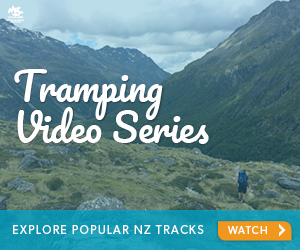During 2017/2018 the NZ Mountain Safety Council (MSC) developed a series of track-specific tramping videos. The purpose of the video series was to provide a specific planning resource that could be used in the ‘active trip-planning’ phase of trip preparations. The videos aimed to provide highly engaging content utilising techniques such as animations, 3D mapping and drone footage.
Each video focusses on content relevant to that track. They cover topics such as the terrain, key weather factors to consider, walking times, key decision making points, common risks and hazards as well as any specific skills required to safely navigate a particular section/s of the track. Ultimately the videos aim to help trampers make it home safely.
While the impact research may be the key success measure of this prevention initiative there are many factors that contributed to this outcome. The success of this initiative provides a blueprint for future prevention tactics.
In my 35 plus years’ experience, I have never ever seen behavioural results as strong as these that can be attributed to one single initiative. There is no doubt, the videos have had a significant positive impact on trampers’ safety-related behaviour.– Emanuel Kalafatelis, Director Research NZ and Fellow of the Research Association of New Zealand (RANZ)
Methodology
We knew this project was unlike anything we had attempted before, and that this would require some form of dedicated research to determine the video’s impacts. To answer ‘How will we know the videos have been a success?’ MSC turned to Research NZ for their expertise.
Through mid-2018 the details of this project were developed and the decision to delay the public release of three videos was made. This would allow Research NZ to conduct a comprehensive, controlled, research methodology without participants seeing the video in a public environment.
The research objectives were aligned to the purpose of the videos. Specifically, the research set out to measure:
- Were the videos increasing awareness and knowledge?
- Were the videos increasing trip preparedness?
- Were the videos enabling more effective decision making?
To achieve this the research utilised a randomised control experimental survey design. This methodology required that no participants had seen the videos outside of the research.
